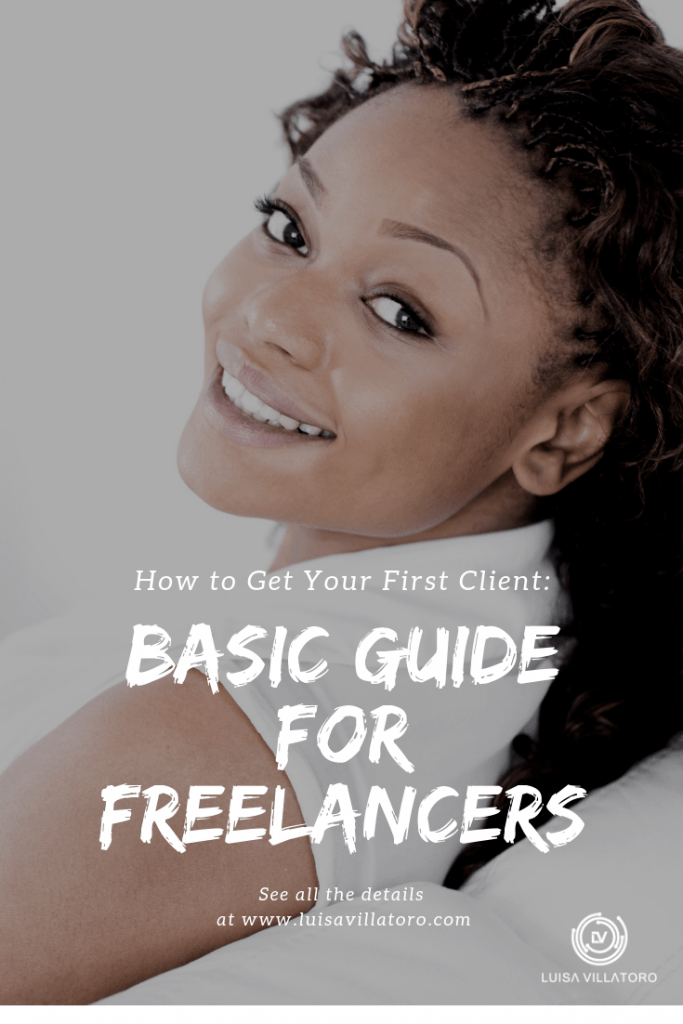So, you’re a newbie in the freelancing world, struggling to get your first client. We feel you, and (trust us) we’ve all been there.
While working from home and being your own boss is probably your dream (why wouldn’t it be?), for the most part, it does take a while to start getting clients (average 6 months), contracts and making a considerable amount of money being a freelancer.
However, don’t give up or get desperate! If you’re persistent, over time, you’ll be getting tons of clients in whichever freelance platform or way to get clients you choose.
On this post, we’ll be sharing some tips that will come in handy to score your first client(s) as a freelancer. Scroll down to discover how you can start building up a reputation while working remotely!


How to Get Your First Client as a Freelancer
The first thing you need to know is that there are different ways to address clients, depending on the freelance platform you choose to work on.
Although each platform has its pros and cons in terms of payments, commissions or offers, we are here to show the differences among each site when it comes to getting clients.
Fiver
For example, if you pick Fiverr as your main source for freelance projects, you must understand that it centers on your professional profile, your skills and the kind of services you can offer.
In that sense, it is quite different to other platforms. Instead of sending proposals to clients, based on what they need, you’ll have to upload different services, describing in detail what you can do AND naming your price.
Let’s say that you are an English to Spanish translator, you could come out with different packages in Fiverr, depending on the length of the texts to translate, each one with a price.
Furthermore, you can also include the estimated time it will take to deliver each “gig” and add extra costs for clients who need a shorter deadline.
However, as a newbie on Fiverr, you won’t have the reputation or portfolio to showcase right away, so it will take you some time to start getting clients, which is why it would be advisable to start with low prices that would invite people to give you a chance (you could increase the costs when you start climbing up levels).
Upwork
Other freelance platforms like UpWork require you to send proposals to clients in different areas.
What happens in UpWork is that clients post projects, which can be one-time gigs or long-term, with a budget and conditions that may be right up your alley.
Then, if you are interested, you’ll have to send them a cover letter explaining what you can do for them or the project, naming your price and the time you would need to complete the task(s). If it all goes well, they’ll be sending a contract your way!
Similarly to Fiverr, it’ll be tricky to get clients on UpWork from the get-go because you don’t have the reputation, yet. On the other hand, you get to send a cover letter in which you can be as charming as possible, telling them that they’ll be your first client and you are offering a special price, just to name a possibility.
At to this point, we’ve talked about how important getting a reputation is for freelancers, but if you’ve been working for a while and have a portfolio to showcase, you could create a website or use tools like Behance to display your best projects.
Behance
You can link to your portfolio on your freelancer profiles or include it on your cover letters for clients, so they can get a glimpse to your work and have an idea of what you can do for them.
Having a portfolio will come in handy, regardless of what your area of expertise is. If you do videos, it’ll be a great way to introduce people to your style without having to send really bulky files that will take too long to load.
Another great thing to do is follow-ups. Let’s say that a client showed interest in your work, but didn’t hire you in the end, you could text them again to let them know that you are available or to ask if they need anything.
You may think it feels like begging, but it only shows that you are willing and ready to work and, as a consequence, you will make an effort to deliver a high-quality result.
Directly Approach Clients
If neither platform seems to be the correct one, you could try giving a try to build your system on your own. This will require for you to have a branded business and your portfolio ready, this will give your client a sense of professionalism on your part.
With this approach you start by building your social media channels, they don’t need to be finished but just to have a presence in social media will help you a lot, start by telling the people you know what you do, invite every single friend you have to like your page, share helpful content and join to niche groups where you can start both learning and participating with the community, this will give everybody a sense that you know what you’re doing and probably they will recommend to any client that they find needs your services.
For my experience LinkedIn and Facebook groups can really help you get your 1st client, as long as you know what you’re doing, people will trust you enough.
To build up awareness and trust some freelancers go on the hunt for small businesses close to them and help them with their brand, website or even small social media needs for free ( or for a minimal cost ) this strategy helps you by creating experience pretty fast.
Regardless of the freelance platform you choose, in order to get clients, you’ll need to be consistent, persistent and to make sure you always put out the best possible version of yourself and your work.
In time, you’ll not only be getting more projects, but you’ll also be able to communicate properly with clients, you’ll understand the real value of what you do, and so much more.
Just don’t give up!
What do you think of this article? Are you ready to get your first client! Let us know in the comments and don’t forget to subscribe to our newsletter!






